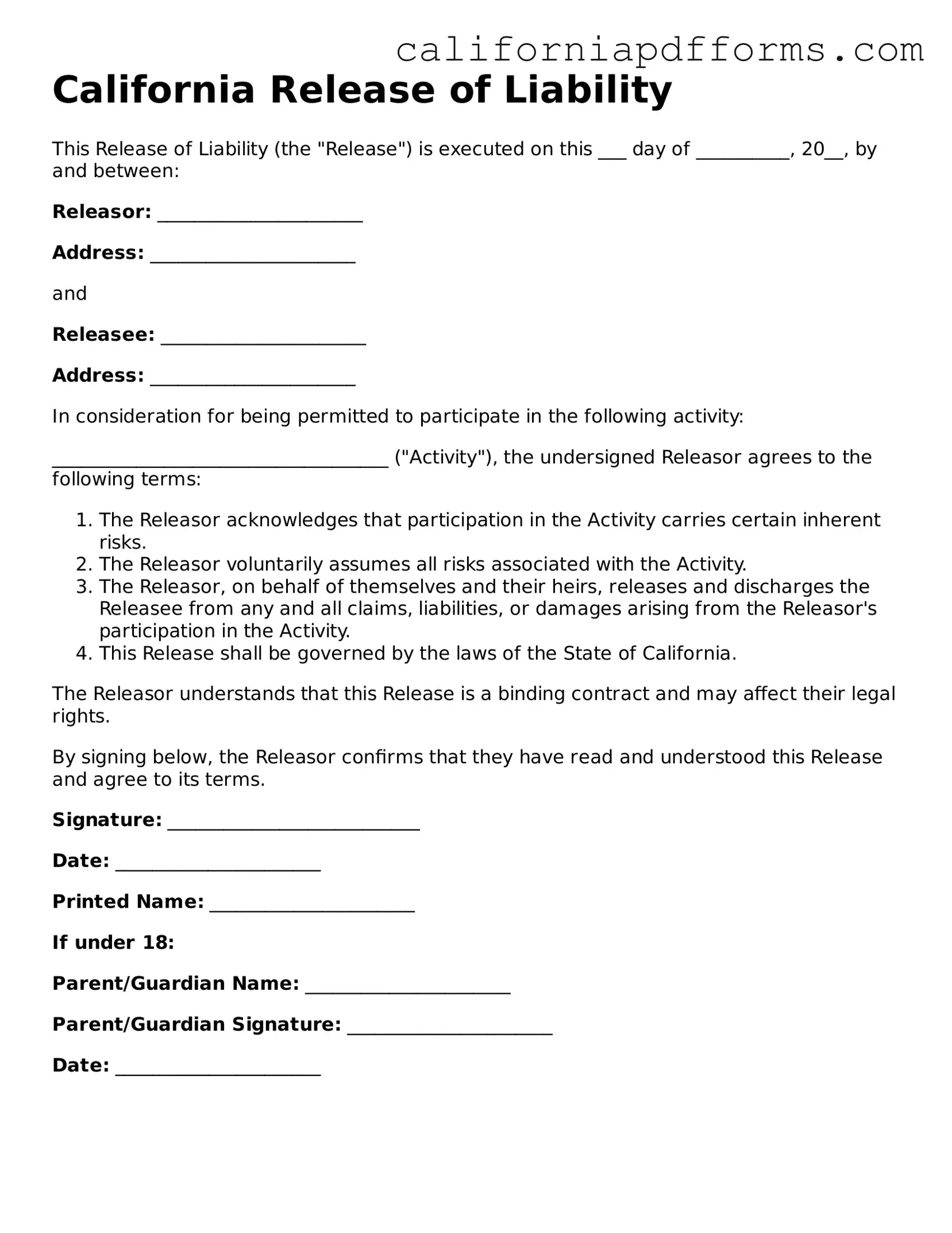A California Release of Liability form is a legal document that helps protect individuals and organizations from being held responsible for injuries or damages that may occur during a specific activity or event. By signing this form, participants acknowledge the risks involved and agree not to hold the organizers liable for any accidents or injuries that may arise. This form is commonly used for recreational activities, sports events, and other situations where there is a potential for risk.
Any individual or organization that hosts an event or activity where participants may face risks should consider using a Release of Liability form. This includes, but is not limited to:
-
Sports leagues and teams
-
Recreational facilities
-
Outdoor adventure companies
-
Event organizers for festivals or community gatherings
-
Private individuals hosting gatherings or activities
Using this form helps ensure that everyone understands the risks and agrees to the terms of participation.
To be effective, a Release of Liability form should include several key components:
-
Identification of the parties:
Clearly state the names of the individuals or organizations involved.
-
Description of the activity:
Provide a detailed description of the event or activity that participants will engage in.
-
Assumption of risk:
Include a statement where participants acknowledge that they understand the risks associated with the activity.
-
Release clause:
A clause that releases the organizers from liability for any injuries or damages that may occur.
-
Signature and date:
Ensure that participants sign and date the form, indicating their agreement to the terms.
Including these elements helps to ensure clarity and enforceability of the document.
Yes, a properly drafted and signed Release of Liability form can be legally binding in California. However, it is important to note that certain conditions must be met for the form to be enforceable. The language should be clear and unambiguous, and participants must voluntarily agree to the terms without any coercion. Additionally, the form should not attempt to waive liability for gross negligence or intentional misconduct, as these cannot be waived under California law.
Minors cannot legally enter into contracts, including a Release of Liability form, without parental or guardian consent. Therefore, if the participant is under 18 years old, a parent or legal guardian must sign the form on their behalf. This ensures that the minor is protected while also allowing the organization to mitigate liability risks. It is advisable to include a section in the form for the parent or guardian to acknowledge and accept the terms for their child.
